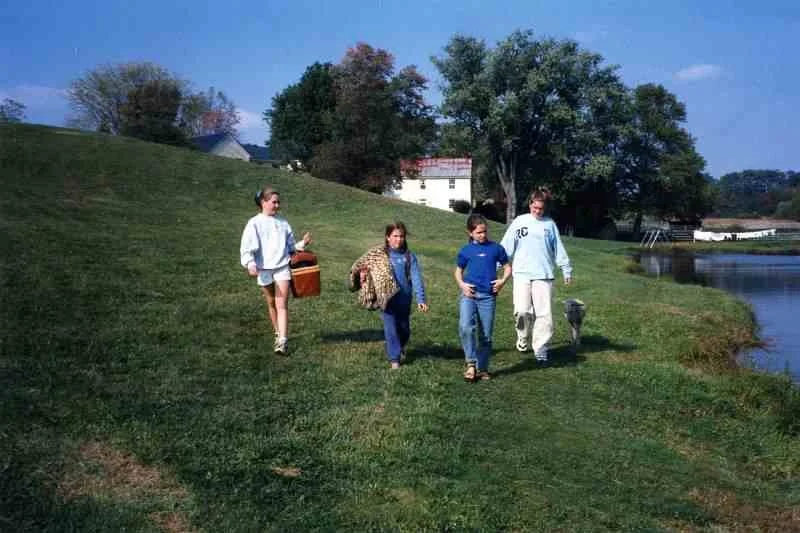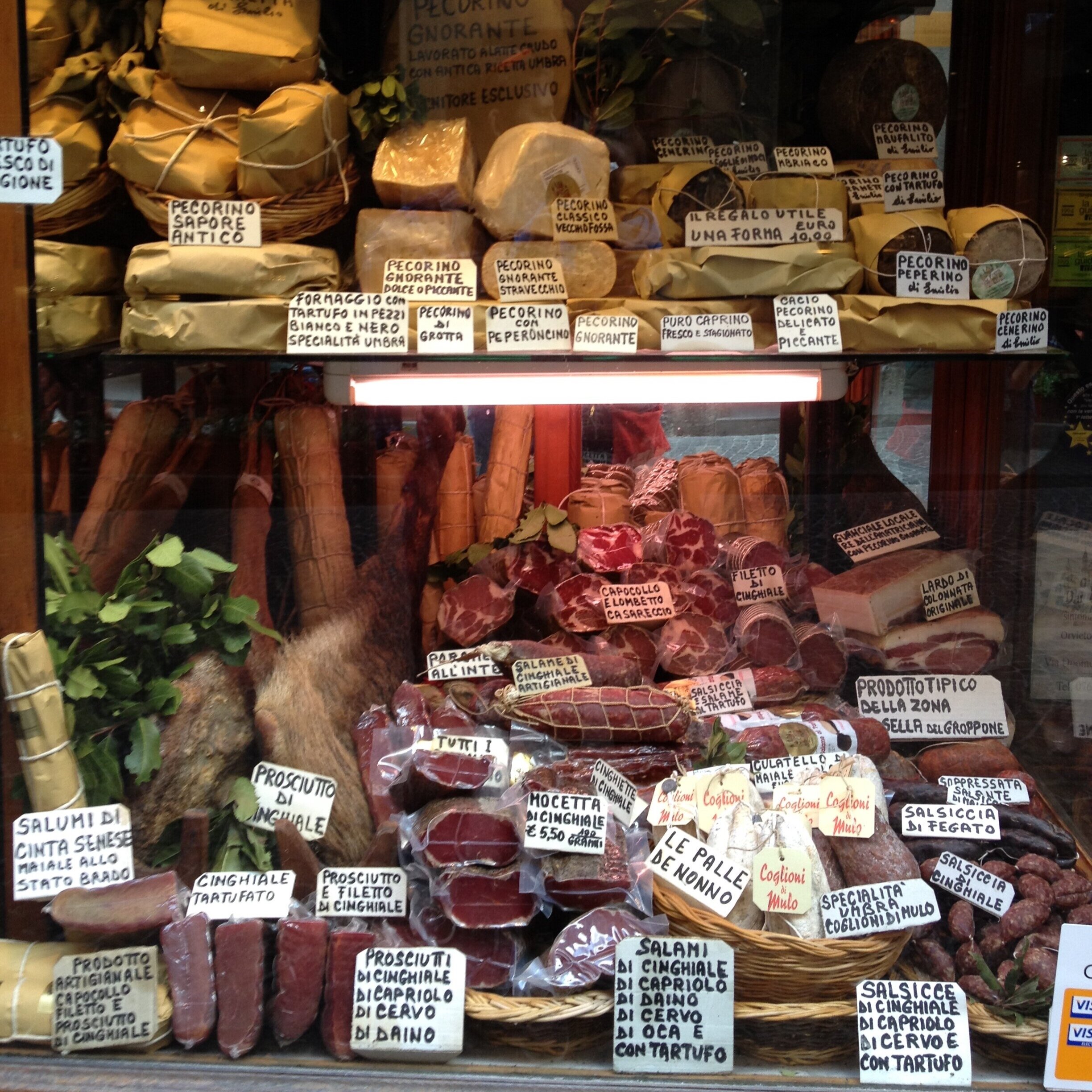Traveling has been a given for so much of my life—and I’ve been thinking about it lately, in the way we’re all wont to fixate on things we can’t have (at least, in this case, for the foreseeable future). I’ve been so lucky to visit far-flung places starting at a young age. And there have been plenty of adventures closer to home too, thanks to an ever-rotating roster of family vacations. We’ve flown in big commercial jets and wobbly prop planes or driven hours in our old blue Volvo to get to places like the tiny island of Pine Cay or the waterfalls in Hilton Head or the turquoise shoals of the British Virgin Islands or the cool, piney forests of the Poconos. We’ve hiked and biked and kayaked and sunbathed.
We’ve ridden horses across the sandy, tumbleweed-ridden plains of southern Arizona and the wildly beautiful mountain ridges of Wyoming. I can remember my dad doing dramatic retellings of old Louis Lamour books on long rides to entertain me and my three sisters as we bumped and jostled our way across the dusty landscape, clinging with a white-knuckled grip to the horns on the worn leather saddles when the horses would pick up the pace, easing into a jerky trot then a smooth canter.
Sometimes we’d come upon the crest of a hill and our horses would slow to barely a walk, picking their way carefully down the narrow rocky path, delicately lifting their hooves to find steady footing. At the base of the hill, the path would widen into a shallow green valley and a lazy-flowing stream, shaded on all sides by trees. We’d let the horses drink thirstily before tying them up and unpacking the picnic lunches from the saddlebags.
After a full day of riding, we’d return home, tired and happy and covered in a thin film of dirt. We’d help untack the horses, brushing the glossy, sweaty imprint of the saddle from their backs.
Those were good days. And in my opinion, the best adventures require picnic lunches. In fact, the existence of a picnic lunch is practically the definition of a good adventure.
The original picnickers!
I’m not talking about the sort of picnic with a wicker basket and a carefully thought-out outfit, skirt artfully arranged around you, a chilled cocktail at the ready in a Mason jar and a plate of fat fudgy brownies wrapped in wax paper waiting for dessert.
I’m talking about the utilitarian, we’re-outside-and-need-to-bring-food sort of picnic. The kind of meal only loosely termed picnic, but really just meaning “food to be taken with us on the go”.
Just because it isn’t fancy doesn’t mean it has to be hastily assembled or slap-dash. Quite the contrary—serious adventures demand plenty of nourishment, all the better to scramble up mountains or canoe across lakes or trek through snow with.
And these sorts of picnics need a very specific kind of food: sturdy and able to withstand being bumped about while hiking or smooshed into the bottom of a backpack or left out in the heat for four hours while you stream-walk and swim under a waterfall and only then sit down to eat.
Crackers are ideal for picnicking—but not a delicate kind that could easily be crushed, like Carr’s water crackers or Bremmer wafers or buttery Club crackers. You need hearty crackers, like a whole grain Wasa or a stoned wheat thin.
You can, of course, buy any of those. Or you could make your own, which is an adventure in and of itself, and one that always makes me feel empowered (probably disproportionately so to the accomplishment, but oh well!). The recipe that follows down below is a great one—it’s easy and simple enough for someone who’s never attempted homemade crackers, and it lends itself while to all sorts of customization. I’ve given a suggestion for a combination of herbs, but try any you like (dried or fresh) or add seeds (like toasted sesame or poppy) or cheese, or leave it out and make them plain.
I love recounting notable picnic lunches growing up, because they were paired with notable adventures: at summer camp in Vermont, every few days or so we’d pile into white vans and drive somewhere for an all-camp activity: a nearby lake or a low-slung mountain or a clearing in the woods one town over. We’d tumble out of the vans and throw down blankets and backpacks, grabbing soccer balls and frisbees. We’d spend the day swimming or playing Capture the Flag or making wobbly-shaped undercooked pancakes over a fire pit. When we got tired enough, we’d flop down on the grass or sit on overturned logs to eat: popping open foil-wrapped hunks of slightly damp cheddar cheese, sweating from the sun, and boxes of Wheat Thins and apples and celery sticks to dip into peanut butter.
Or hiking with my parents and sisters on the heavily forested paths of the Appalachian Trail, following faint white blazes up steep crests and down valleys cut through by cool, shaded streams. At the summit, we’d break for lunch: single-serving packets of tuna and styrofoam-like brown rice cakes sandwiched with wedges of iceberg lettuce and jam smeared onto my mom’s homemade white sandwich bread.
I ate picnics at the top of Table Mountain in Cape Town at age 21; on the sloping lawn of Oregon Ridge Park in Maryland to watch the 4th of July fireworks at age 6; in the back of a Boston whaler drifting on the placid surface of Squam Lake at age 18.
Practicing my picnic skills at a young age.
High in the alpine meadows of the Swiss Alps, I shared crusty bread and wedges of firm, nutty, yellow-gold cheese with my sisters before trekking to a mountain hut for the night. I subsisted almost entirely for 10 days on gas station crackers and thick bars of Cadbury chocolate on a road trip through South Africa’s interior.
I ate tortillas spread thickly with Nutella on the Long Trail in Vermont and packets of instant oatmeal in the Catskills during college backpacking excursions. I ate sleeves of Saltine crackers on the Amtrak home from New York for the holidays, and bags of cold cherries on the lawn in Central Park, and oversized blueberry muffins to bike ride across Block Island, and sandwiches of peanut butter and Fluff on the beach in Nantucket, and baguettes slathered with butter and draped with salty ham perched on the ledge outside my office in midtown Manhattan. I ate garlicky tomato-rubbed bread on the beach in Sitges, Spain. I ate miniature pots of sweet, cheese-like yogurt and flaky croissants in rural France and ripe, juicy peaches on the quad at Princeton and stacks of nutty, barely sweet Digestives biscuits in a park in London. I ate picnics on car rides, on boat trips, on the putting green of a golf course, on the dock of our pond with my feet dangling over the water.
Wherever you find yourself picnicking, I recommend you plan and pack well—pack a firm pear and raw sugar snap peas and hummus. Pack things you like to eat! Pack a sandwich of prosciutto and hummus with olive oil on golden ciabatta with juicy red grapes. Pack a grain salad of chewy farro with salted cashews and chickpeas and pesto. Pack plump medjool dates and peanut butter or crunchy almond cookies and cold roasted asparagus. And crackers! Make these crackers.
Buttery Herb Crackers
2 1/2 cups (300g) all-purpose flour or whole wheat flour or a combination of both
1 tablespoon sugar
1 teaspoon kosher salt
8 tablespoons (113g) unsalted butter, cold
1/3 cup (75g) water
1/3 cup (75g) buttermilk (or use all water)
1/4 to 1/2 cup chopped fresh herbs or dried herbs—like rosemary, thyme, and tarragon (to taste), optional
Preheat your oven to 400 degrees F. Line two baking sheets with parchment paper.
Add the flour, sugar, and salt to a food processor and pulse to combine. Add the butter and pulse a few times until the mixture is sandy but some of the butter is still is larger pea-sized lumps.
Add the water and pulse a few times, then—with the machine running—drizzle in the buttermilk (or another 1/3 cup water if you’re using all water) and process until the dough comes together in a ball.
Turn the dough out onto a lightly floured surface—or you can roll it out directly onto a sheet of parchment. If you have a pasta machine, you can use that to roll it out.
Roll the dough as thinly as you possibly can—the thinner you roll it, the crispier the crackers will be.
The most important thing is to try to keep the crackers uniformly thick, so they bake evenly otherwise some will burn if they’re thinner than others.
Cut the crackers into small squares or punch out circles with a small cutter. Use an offset spatula to transfer the crackers to the parchment-lined sheets. Prick them lightly with a fork or knife to prevent them from puffing up as they bake.
You can bake them as is, or you can brush them with a little milk or water and sprinkle them with flaky salt or more herbs or cheese, depending on what you put in the dough.
Bake for about 10 minutes, or until lightly golden brown. Remove from the oven and let cool—the crackers will crisp up as they cool.
Store any crackers you don’t eat the first day in an airtight container, or freeze them.












